
Roots
Consider a strand of textured hair, a filament of profound stories, carrying echoes of countless generations. It is a biological marvel, certainly, with its unique helical structure and the way it unfurls from the scalp. Yet, it also stands as a living document of heritage , a testimony to ancestral practices and deep wisdom passed down through time.
For those with coils and curls, the journey of hair care has always been one of intimate connection, a dance between understanding its inherent properties and finding ways to honor its vibrant expression. This exploration considers a particular element, mucilage, a substance seemingly simple yet holding a central role in this rich history.
Mucilage, that viscous, slippery gift from various plants, has long been a quiet hero in the quest for supple, healthy textured hair across diverse ancestries. Its story is not one of sudden discovery but of persistent observation, of recognizing nature’s gentle conditioners and incorporating them into daily rituals of care. It speaks to a profound understanding of natural resources, a wisdom that often predates formalized scientific inquiry. These practices were not merely cosmetic; they were acts of reverence, community building, and cultural continuity.

The Textured Hair Codex ❉ A Historical and Scientific Perspective
To truly appreciate the role of mucilage, one must first grasp the intrinsic nature of textured hair itself. Its distinct structure, characterized by an elliptical cross-section and a curved follicle, lends itself to tight curls and coils. This anatomical reality means that the natural oils produced by the scalp, known as sebum, struggle to travel down the length of the hair shaft, leaving the ends particularly prone to dryness. This inherent dryness, coupled with the hair’s propensity for tangling and knotting due to its many points of curvature, historically posed unique challenges for moisture retention and overall manageability.
Textured hair, with its unique helical form, has historically required special care due to its natural inclination toward dryness and tangling, making moisture retention a central focus of ancestral practices.
The very biology of Afro-textured hair offers clues to its ancient purpose. Scholars believe its coiled structure adapted to protect early human ancestors from intense ultraviolet radiation, providing insulation and aiding in moisture retention in hot, arid environments. This deep physiological connection to African climates underlines why practices focused on hydration and protection became so integral to hair care traditions within the African diaspora. Mucilage, with its water-binding capabilities, offered a solution perfectly aligned with these ancestral needs.

Ancestral Understanding of Hair Anatomy and Physiology
Long before microscopes revealed the elliptical shape of a coiled strand or the precise angle of its follicle, ancestral communities understood the fundamental needs of their hair. They observed its response to environmental factors, to various plant applications, and to different methods of handling. This intimate knowledge, accrued over countless generations, informed their selection of natural ingredients for care.
They recognized that some plants yielded a substance that seemed to cushion the strands, making them less brittle, more pliable, and easier to work with. This empirical wisdom, a cornerstone of ancestral knowledge , guided their hands.
The traditional lexicon surrounding textured hair often speaks to its physical qualities and the desired outcomes of care. Terms might describe the varying degrees of curl, the softness of a conditioned strand, or the sheen imparted by natural applications. While modern classification systems offer detailed numerical types (e.g.
4A, 4B, 4C), these are relatively recent constructs. Ancestral communities relied on descriptive language rooted in sensory experience and the practicalities of styling, reflecting a holistic view of hair as a living extension of self and identity .

How Did Ancient Peoples Classify Hair Textures?
While formal scientific hair typing systems are modern inventions, communities of the past held their own nuanced ways of describing hair. These descriptions were often linked to local dialects, cultural aesthetics, and the practicalities of styling. For instance, some terms might differentiate between hair that was “soft like cloud,” signifying exceptional suppleness, or “strong like root,” denoting resilience and density.
Such classifications, though informal, were deeply rooted in a collective understanding of diverse hair characteristics within specific cultural contexts. They guided communal grooming and the application of particular remedies, including those from mucilage-rich plants.
| Historical Descriptor (Conceptual) "Soft like River Moss" (implies suppleness, moisture) |
| Modern Scientific Analog Hair with good elasticity and reduced friction |
| Relevance to Mucilage and Heritage Mucilage directly contributes to this quality, helping hair resist breakage and retain a soft feel, a long-valued attribute in traditional hair care. |
| Historical Descriptor (Conceptual) "Dense like Forest Canopy" (implies volume, fullness) |
| Modern Scientific Analog High hair density, perhaps coily or kinky textures |
| Relevance to Mucilage and Heritage Mucilage applications can enhance definition without weighing hair down, allowing its natural volume to be celebrated, as was common in many historical styles. |
| Historical Descriptor (Conceptual) "Resilient like Vine" (implies strength, durability) |
| Modern Scientific Analog Hair with good tensile strength, less prone to breakage |
| Relevance to Mucilage and Heritage By increasing slip and moisture, mucilage protects delicate strands during manipulation, a core protective aspect in the historical care of textured hair. |
| Historical Descriptor (Conceptual) Understanding these descriptive differences helps appreciate the historical aims of hair care and how mucilage served those aims. |
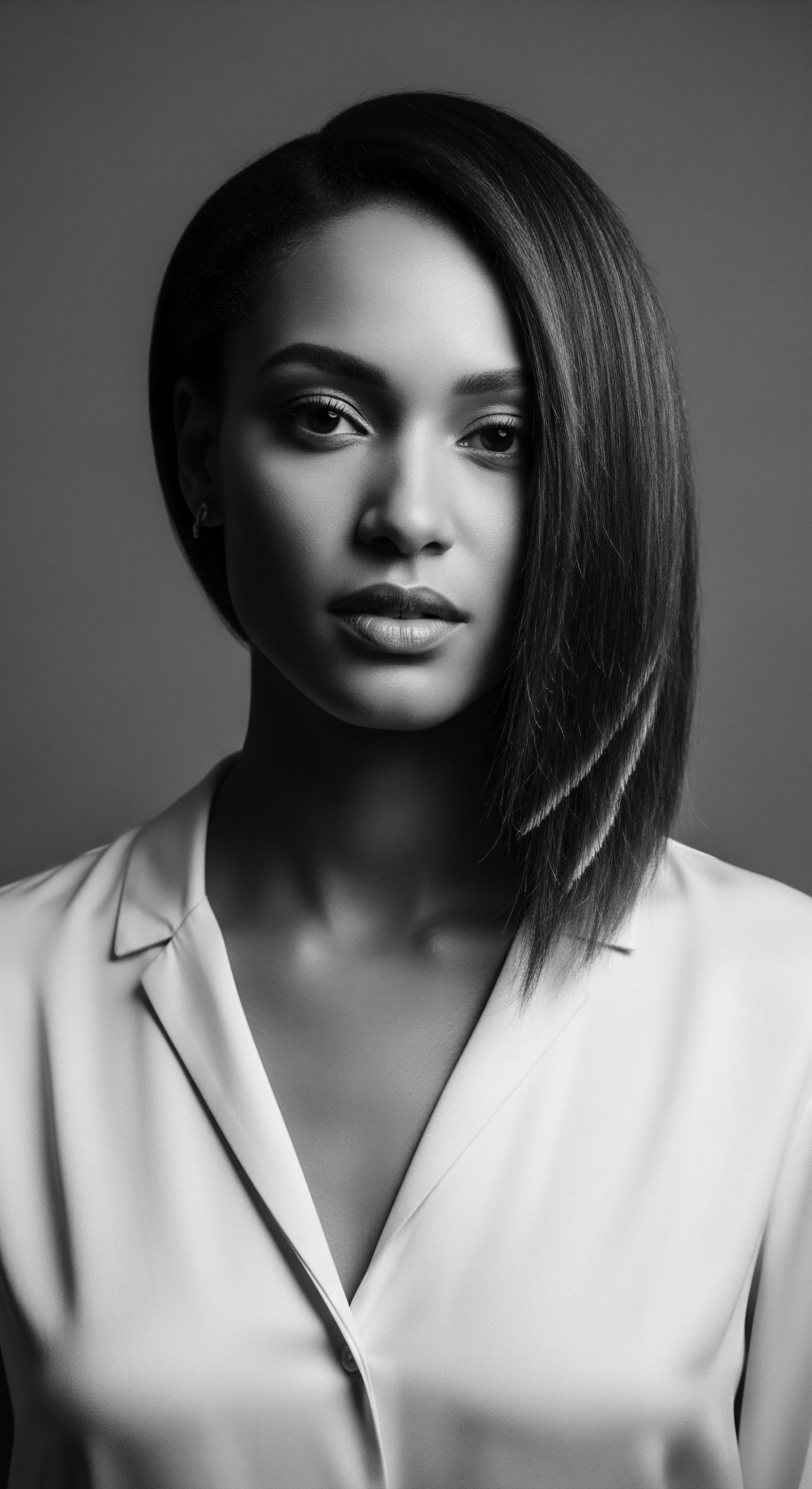
Ritual
The path to hair suppleness, particularly for those with textured hair, has been a deeply ritualized one, stretching back through time. It is a path where the hand met the herb, where intuition guided preparation, and where the efficacy of natural compounds was proven through repeated generational use. Within this context, the plant-derived mucilages stand as testaments to ancestral ingenuity, quietly transforming brittle strands into pliable, soft coils.
Mucilage, a polysaccharide, is adept at drawing moisture from the environment and sealing it onto the hair shaft. This property addresses one of the primary challenges for textured hair ❉ its natural tendency toward dryness due to the structure of its follicle, which hinders the smooth flow of natural oils from scalp to tip. When applied, mucilage forms a thin, protective film that coats the hair, reducing friction between individual strands, minimizing tangling, and making the hair more elastic and less prone to breakage during manipulation. This ‘slip’ imparted by mucilage is invaluable for detangling and smoothing the hair, a benefit recognized and utilized across centuries.

The Tender Thread ❉ Ancient Practices and Styling Heritage
Across African and Indigenous American cultures, the relationship with hair was rarely solely cosmetic. It was a language, a symbol of status, group affiliation, marital state, or spiritual connection. The care of hair was therefore an act of profound cultural significance, often performed communally.
The selection of ingredients reflected local flora and inherited wisdom. Plants containing mucilage became prized for their ability to bring order and beauty to hair that might otherwise be difficult to manage.
For instance, the okra plant (Abelmoschus esculentus), a staple in many West African cuisines, was also highly regarded for its mucilaginous pods. When boiled, okra releases a slippery substance that could be used as a hair conditioner and detangler. This practice highlights a practical resourcefulness, where food items served dual purposes within the household, contributing to both physical nourishment and personal adornment. Similarly, flax seeds (Linum usitatissimum), known since antiquity, were prepared to extract their gel, offering a natural styling and conditioning agent that provided both hold and softness.
The historical use of mucilage-rich plants like okra and flaxseed showcases ancestral ingenuity in transforming everyday resources into potent hair conditioners, deeply integrating hair care with daily life.
The legacy of such ingredients continues today, often rediscovered and re-contextualized by those seeking to connect with ancestral care practices. These methods were not about altering the inherent curl pattern, but rather about enhancing its natural state, making it healthier, more defined, and ultimately, more supple. This aligns with a deeper cultural appreciation for natural textures, a sentiment that has ebbed and flowed through history, but always returns to honor the original beauty of textured hair.

Traditional Ingredients and Their Mucilaginous Gifts
The variety of mucilage-yielding plants employed historically is as diverse as the cultures that used them. Each region brought its own unique botanical knowledge to the ritual of hair care.
- Marshmallow Root (Althaea officinalis) ❉ Native to Europe and North Africa, this plant’s root is rich in a lubricating mucilage that softens and protects the skin and hair. Its use stretches back to Egyptian antiquity for various soothing applications.
- Slippery Elm (Ulmus rubra) ❉ Indigenous to North America, the inner bark of this tree yields a demulcent mucilage. Native American communities historically utilized it for its soothing properties, and its application for hair would have been consistent with its general benefits for softening and protecting.
- Sidr Powder (Ziziphus jujuba leaves) ❉ A plant cherished in certain Middle Eastern and North African traditions, Sidr leaves are known for their saponins and mucilages, providing a gentle cleanse and natural conditioning effect, helping to retain hair color and add volume.
- Hibiscus (Hibiscus rosa-sinensis) ❉ Widely grown in tropical and subtropical regions, hibiscus leaves and flowers produce a mucilage that acts as a natural conditioning agent, improving softness and shine, and reducing frizz. It has been a component in traditional hair tonics.
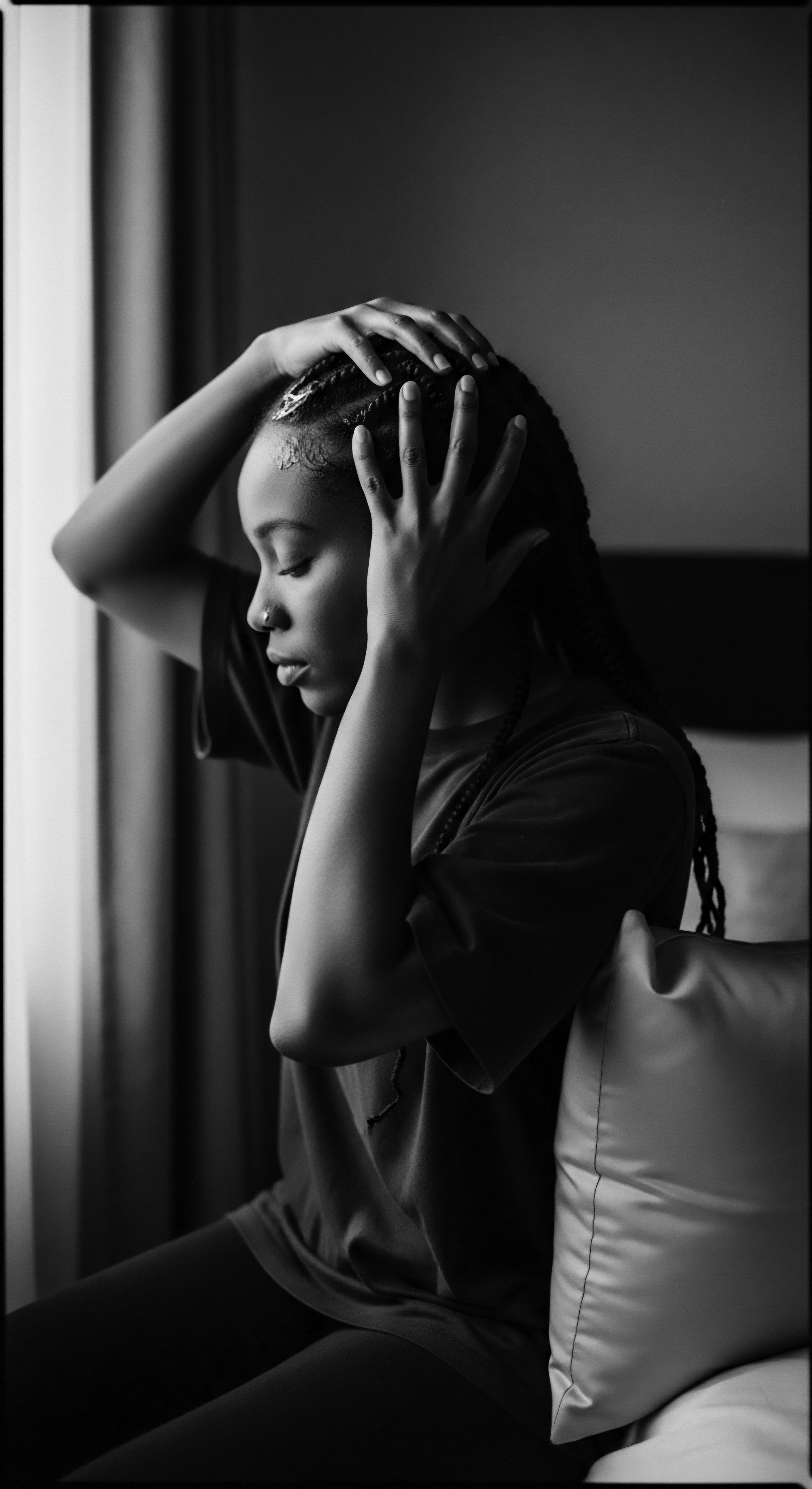
The Art and Science of Ancestral Styling Techniques
Beyond merely conditioning, mucilage played a role in the very artistry of textured hair styling. Styles like braids, twists, and various forms of protective coiling have ancient roots, serving not only aesthetic purposes but also protecting the hair from environmental damage and reducing breakage. The application of mucilaginous preparations before or during styling would have provided the necessary slip for easier detangling and manipulation, allowing for smoother sections and better definition of curls within these styles.
One significant example of this intertwining of ingredient and technique can be seen in the preparation of hair for braiding. Accounts from historical periods within the African diaspora speak to the careful pre-treatment of hair with water, oils, and “buttery balms” for moisture before the arduous process of braiding began. Mucilage-rich gels, extracted from local plants, would have served as integral components of these balms, providing the essential lubricity that reduced friction, prevented tangling, and made the hair more amenable to the tight, intricate patterns that define many traditional styles. This careful attention to preparation allowed styles to last longer, protecting the fragile strands and contributing to overall hair health over extended periods.

How Did Mucilage Support Traditional Detangling Methods?
The act of detangling textured hair, particularly when dry, can cause breakage. Historically, water was paramount, often used in conjunction with fatty substances to provide ‘slip’ and soften the hair. Mucilage, with its ability to bind water and form a lubricating film, would have significantly enhanced this process.
By coating each hair strand, it reduced the microscopic friction between overlapping cuticles, allowing combs (often wide-toothed, or even fingers) to glide through with less resistance. This reduced physical stress on the hair was critical for preserving length and maintaining the integrity of delicate curls and coils, reflecting a deep, practical understanding of hair mechanics within ancestral practices.

Relay
The enduring presence of mucilage in hair care, spanning continents and centuries, attests to its profound efficacy and its deep resonance with the needs of textured hair. This is not merely a historical footnote; it is a living legacy, a continuous exchange of ancestral wisdom with contemporary understanding. The journey of mucilage, from a simple plant extract in ancient villages to a recognized compound in modern formulations, highlights a cyclical understanding of wellness, where the past continually informs the present. Its properties, once observed empirically, are now illuminated by scientific inquiry, validating the astute observations of generations past.
The suppleness that mucilage imparts is a direct result of its polymeric structure. These complex carbohydrates, when hydrated, form a gel-like matrix that holds water molecules in a way that allows them to readily transfer to the hair shaft. This hydration effect is crucial for textured hair, which tends to be more prone to dryness due to its coiled architecture and the challenge for natural oils to coat the entire strand. Beyond simple hydration, the film-forming capabilities of mucilage provide a protective barrier.
This barrier helps to smooth the outer cuticle layer of the hair, reducing porosity and environmental damage. The result is hair that feels softer, moves more freely, and is less susceptible to breakage during styling or daily activities.
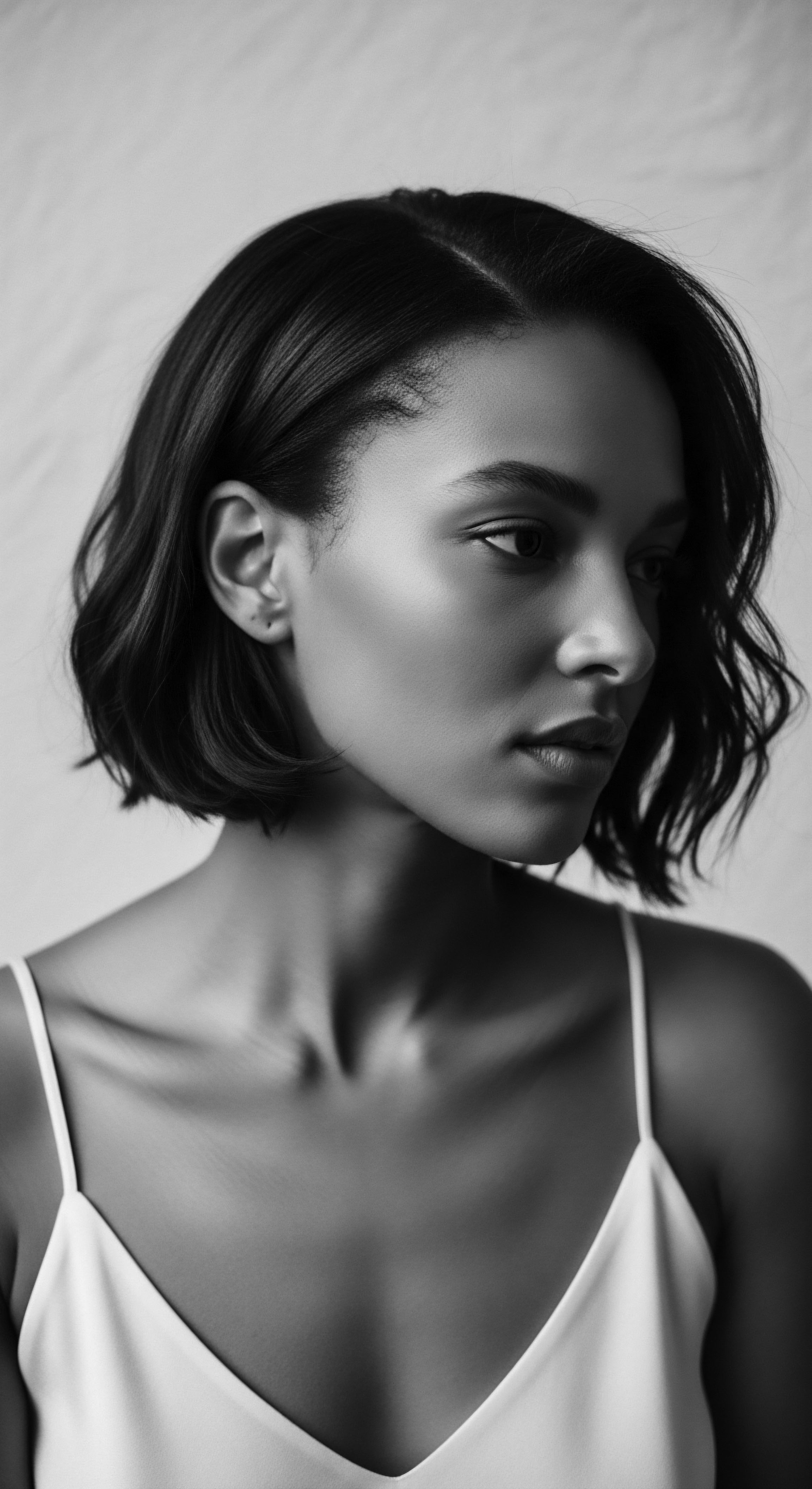
Connecting Current Understanding to Historical Practices
Modern science has begun to unearth the mechanisms behind what ancestral communities intuitively understood. Studies confirm that mucilaginous extracts possess properties that condition hair, enhance shine, and improve manageability. A study evaluating the leaf mucilage of Buchanania lanzan as an herbal hair conditioner found that a 10% (w/v) aqueous extract showed “good hair texture, moisture improvement, easy to comb, improved gloss (shine)” when compared to commercial conditioners. This research offers a contemporary scientific lens to traditional practices, confirming the value of these plant-derived compounds.
The transition from observing a plant’s softening effect to understanding the polysaccharide interactions at a molecular level represents a profound bridge between ancestral knowledge and modern cosmetology. The scientific community now investigates specific mucilage-rich plants for their precise benefits in hair care, often finding that the traditional uses were indeed grounded in tangible chemical properties.
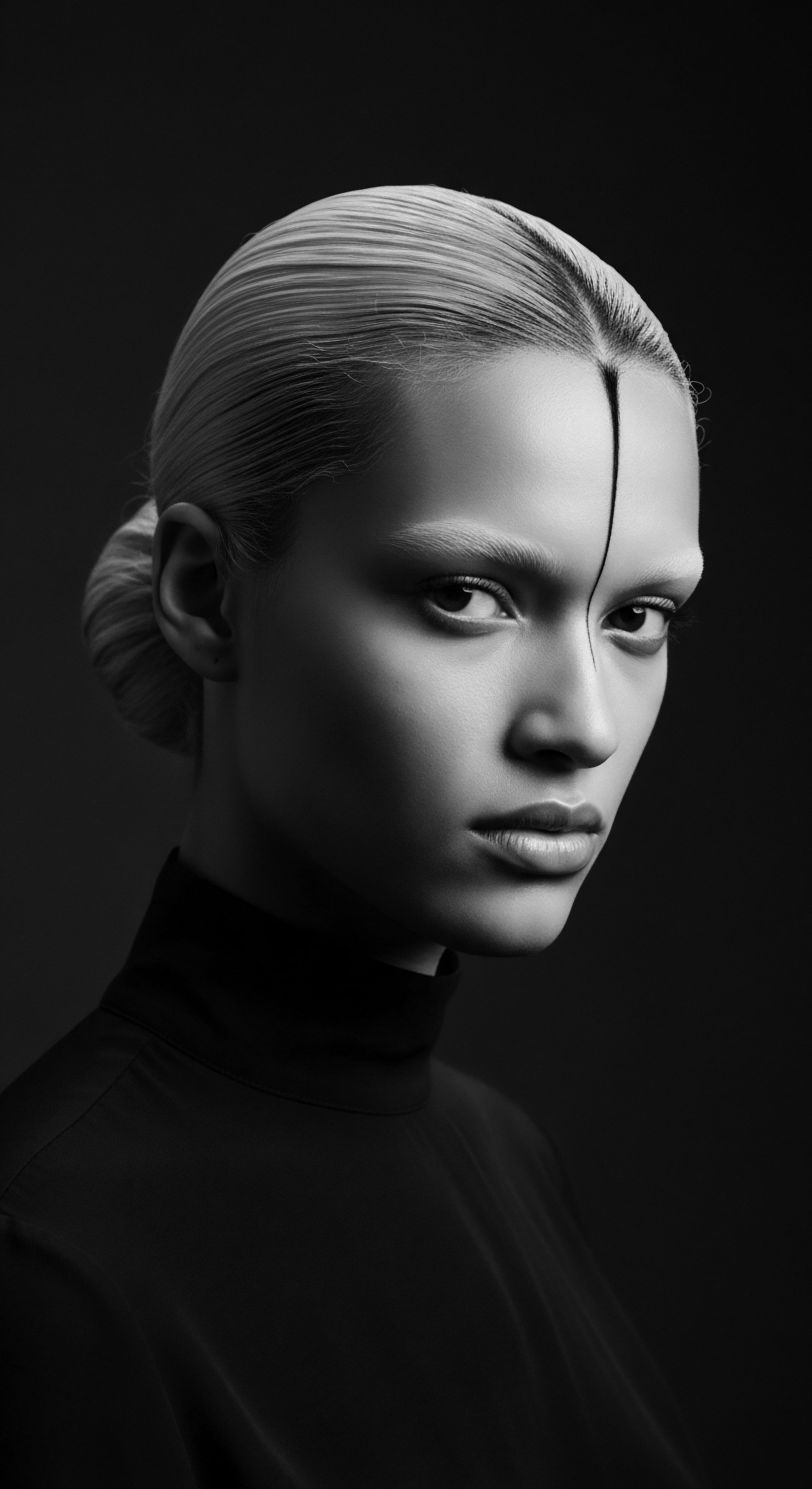
What Chemical Properties Define Mucilage’s Hair Benefits?
Mucilage primarily comprises large, complex polysaccharides, which are long chains of sugar molecules. When these molecules encounter water, they absorb it, swelling and forming a thick, slippery gel. This gel exhibits what is known as Hydrophilic (water-attracting) properties. When applied to hair, the mucilage forms a superficial film that coats the hair shaft, effectively acting as a humectant to draw in and retain moisture, and as an emollient to smooth the cuticle.
This coating reduces inter-fiber friction, promoting what is often called “slip,” which is absolutely essential for detangling textured hair without causing mechanical damage. The presence of other compounds like proteins, minerals, and vitamins within the plant extracts also contributes to the overall nourishment provided.
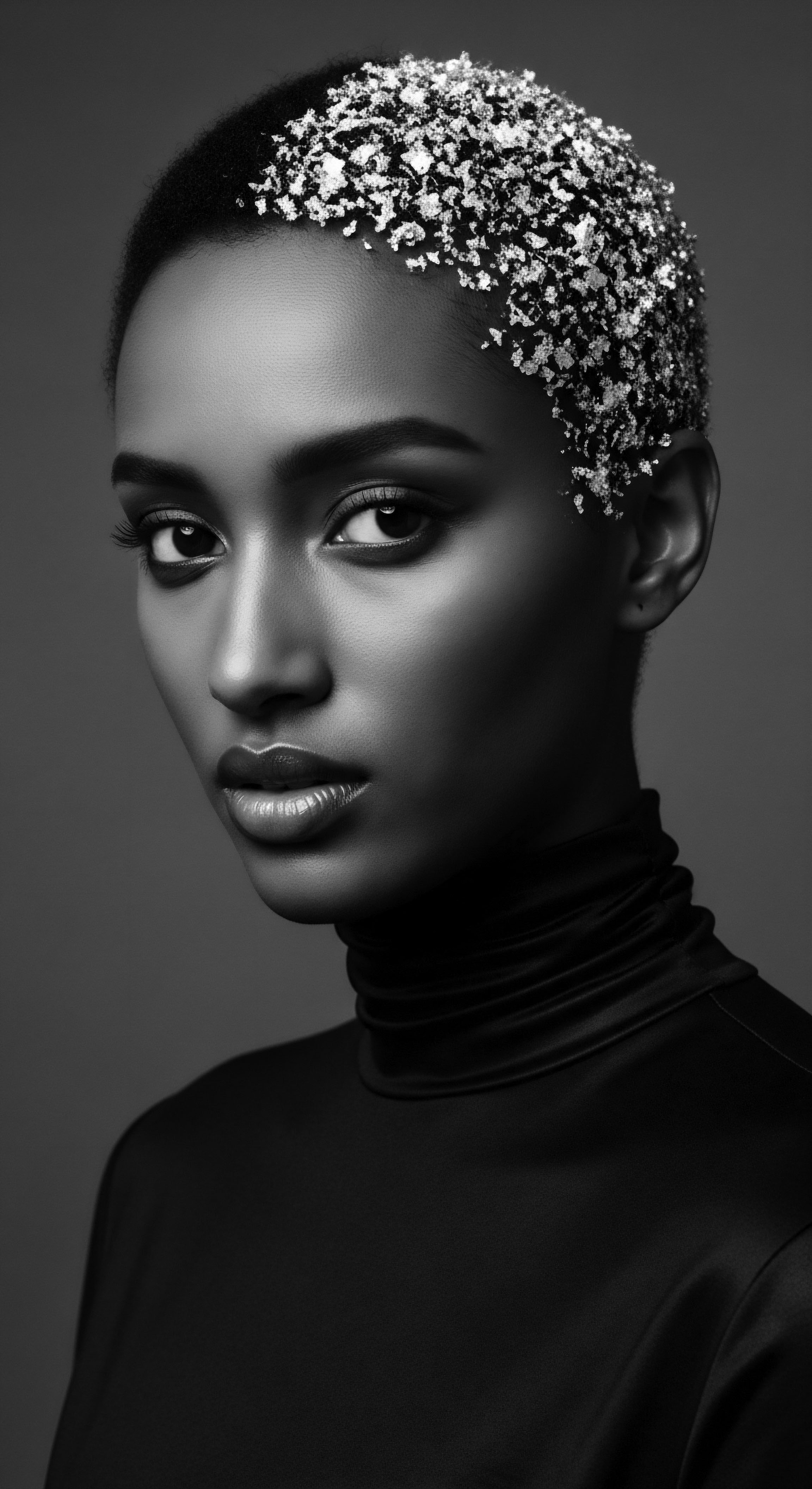
Case Studies and Ancestral Narratives in Practice
One powerful historical example of mucilage utilization comes from the African continent, particularly within West African communities. The use of Okra, not only as a food source but as a beauty aid, is well-documented. Enslaved Africans, forcibly brought to the Americas, carried this invaluable knowledge with them. Despite the brutal conditions of the transatlantic slave trade and the systematic attempts to strip them of their cultural identity, the heritage of hair care practices persisted.
This persistence was an act of profound cultural resistance and continuity. Okra’s mucilaginous properties were utilized to prepare hair for styling, making it softer and easier to braid or twist, which were crucial protective styles in the harsh conditions of enslavement (Mane, Manthen, & Mhamane, 2019). The ability of okra mucilage to provide slip meant fewer broken strands and more manageable hair, a small but significant way to retain a piece of self and cultural connection amidst profound oppression.
This historical survival of practices speaks volumes about their efficacy and deep cultural roots. The knowledge of how to extract and apply mucilage from plants like okra, Flaxseed, or Marshmallow Root became a form of inherited wealth, passed from elder to youth, often through the intimate act of hair grooming. This practice was more than a routine; it was a lesson in resilience, a transfer of traditional wisdom, and a celebration of collective identity. The act of using these natural ingredients, often gathered and prepared within the community, solidified bonds and reinforced a connection to the ancestral land, whether that land was immediate or a remembered home.
| Plant Source Okra (Abelmoschus esculentus) |
| Historical Application (Cultural Context) Boiled pods or leaves used in West African communities and later in the diaspora for hair softening and detangling. |
| Scientific Explanation of Benefit Rich in moisturizing mucilage; provides slip to reduce friction and tangling, enhancing suppleness and manageability. |
| Plant Source Flaxseed (Linum usitatissimum) |
| Historical Application (Cultural Context) Seeds boiled to extract gel, used across various ancient cultures for styling, conditioning, and defining curls. |
| Scientific Explanation of Benefit Polysaccharides form a film, lubricating hair, providing definition, and retaining moisture, which leads to improved elasticity. |
| Plant Source Marshmallow Root (Althaea officinalis) |
| Historical Application (Cultural Context) Infusions or poultices from the root used in ancient Egyptian and European traditions for soothing and softening skin and hair. |
| Scientific Explanation of Benefit Highly concentrated mucilage coats the hair shaft, offering emollient properties that soften strands and reduce dryness. |
| Plant Source These examples highlight a rich legacy of utilizing natural mucilage to maintain hair health and beauty across diverse cultural landscapes. |

The Unbound Helix ❉ Voicing Identity and Shaping Futures
The historical reliance on mucilage for hair suppleness is a powerful statement about agency and self-definition. In times when dominant beauty standards often marginalized textured hair, the consistent practice of nourishing and styling it with ancestral ingredients was a quiet act of defiance and affirmation. The soft, manageable hair that resulted from mucilage applications allowed for a broader range of traditional hairstyles, each carrying its own cultural narrative. These styles became visible markers of identity, resilience, and beauty standards that originated from within the community, rather than being imposed from outside.
The cultural significance of mucilage-infused practices extends beyond the individual strand. It speaks to a communal memory, a collective inheritance of wisdom that continues to inform modern hair care. The movement to reclaim and popularize natural hair care practices, which gained momentum in the 20th century and continues today, often draws directly from these ancestral precedents. It is a recognition that the “science” of our ancestors, rooted in observation and deep connection to nature, holds profound truths for contemporary well-being.
The use of plant mucilage is not just about physical softness; it represents a softness of spirit, a return to practices that acknowledge the inherent beauty and strength of textured hair. It empowers individuals to connect with a living heritage, to understand their hair not as a problem to be solved, but as a valued part of their being, capable of suppleness, strength, and boundless expression.
The enduring use of mucilage-rich plants reflects a profound connection to ancestral wisdom, providing tangible hair benefits and affirming cultural identity through centuries.

Reflection
The journey through mucilage’s ancient and enduring role in textured hair care is a meditation on memory. It is a story whispered not only in forgotten texts but within the very structure of a coiled strand, in the gentle rituals passed from a grandmother’s hand to a grandchild’s scalp. This exploration reveals that the pursuit of hair suppleness was never a fleeting trend but a practical art, a cornerstone of daily life deeply woven into the fabric of textured hair heritage . From the nourishing embrace of okra’s gel in West Africa to the soothing touch of marshmallow root in ancient Egypt, the efficacy of these plant gifts speaks volumes, a testament to human observation and ingenuity across millennia.
What we witness in these historical practices is a profound understanding of hair as a living entity, deserving of careful attention. The supple strands achieved through mucilage applications were not merely about appearance; they spoke to health, to manageability, and to the ability to craft styles that reflected communal belonging and personal expression. This collective wisdom, refined over generations, forms a powerful current that continues to flow through our understanding of hair and its care today. It reminds us that the most potent solutions often lie closest to the earth, in the natural world that has always sustained us.
For those of us tending to textured hair today, acknowledging this deep past offers more than just a technique; it offers a reconnection. It is an invitation to feel the continuity of hands that prepared these same remedies centuries ago, hands that honored the coils and kinks with equal devotion. The softness and elasticity that mucilage affords our hair today is a tangible link to a heritage of resilience and beauty, a living archive of wisdom that continues to shape our self-perception and celebrate the unbound helix that crowns us.

References
- Mane, S. V. Manthen, V. S. & Mhamane, P. H. (2019). Potential of Okra (Abelmoschus esculentus) as an organic hair conditioner. Zenodo .
- Meghana, D. & Ramprakash, D. (2012). Evaluation of Buchanania lanzan leaf mucilage as herbal hair conditioner. ResearchGate .
- Chauhan, M. & Tiwari, A. (2024). Hibiscus mucilage and vitamin E hair conditioner formulation and evaluation. World Journal of Pharmaceutical Research, 13(1), 1645-1658.
- Sitthithaworn, W. et al. (2018). Mucilage powder from Litsea glutinosa leaves stimulates the growth of cultured human hair follicles. Songklanakarin Journal of Science and Technology, 40(5), 1076-1080.
- Rambwawasvika, H. et al. (2018). Extraction and Characterisation of Mucilage from the herb Dicerocaryum senecioides and its use as a potential hair permanent. Research India Publications, 9(10), 690-694.
- Noma Sana. (2024). The History of Straightening Afro Hair ❉ Culture, Trends & Identity. Noma Sana Blog .
- EBSCO Research Starters. (n.d.). Afro-textured hair. EBSCO Research Starters .
- Hachette Book Group. (n.d.). 8 Native Plants for Native Medicine. Hachette Book Group .
- Lush South Africa. (n.d.). Marshmallow Root Mucilage. Lush South Africa .
- Herbs2000.com. (n.d.). Gums And Mucilages. Herbs2000.com .
- MDedge. (2025). Historical Perspectives on Hair Care and Common Styling Practices in Black Women. MDedge .
- Quora. (2020). How do black people take care of their hair? Quora .
- Quora. (2022). What is the evolutionary reason for why sub-Saharan African people (black people) have such tightly coiled hair that is so distinctly different from the hair of other racial groups? Quora .
- ELLE. (2020). A Brief History Of Black Hair Rituals. ELLE .
- Treasured Locks. (n.d.). Black Hair Care Tips for Black Women & Men. Treasured Locks .
- El-Demerdash, S. (2021). Traditional ancient Egyptian medicine ❉ A review. ResearchGate .
